Featured
- Get link
- X
- Other Apps
Marathons, Metaphors & Commitment at Mile 19
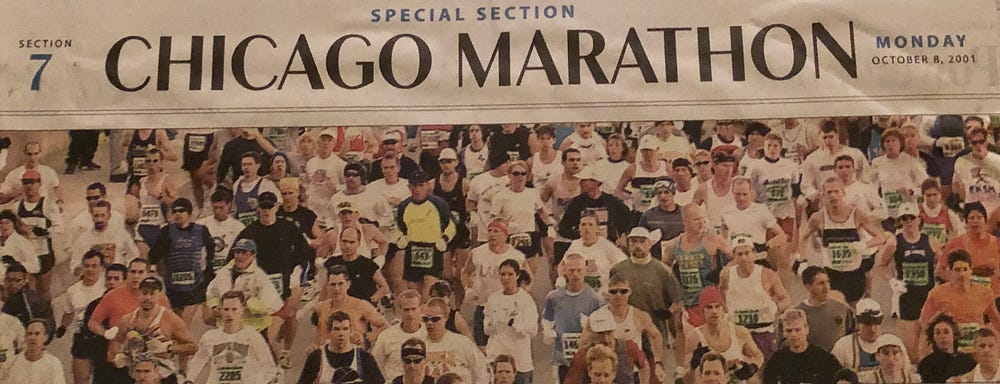
“When you reach the finish line, one of two things will happen. You’ll either say, ‘What the hell was I thinking? Never again!’ or ‘When can I do another one?’”
I listened to my Team in Training coach pump us up. The room was filled with seasoned runners, ambitious racewalkers and first time marathoners like myself. We sat in chairs, some of us slumped over table tops with bellies rumbling from the carb-loading spaghetti dinner the Leukemia & Lymphoma Society had provided for us. I watched subtle signs of anxiety all around me. The person next to me fiddled with the safety pins on his race bib. Two women at the next table huddled around a map of the race route and whispered furtively to each other, as if they were plotting world domination.
Our coach, Randy, stood on a chair at the front of the room. He whipped a rainbow clown wig out of his pocket and put it on.
“This is how you’ll find me. I’ll be in the crowd waiting for you between miles 18 and 20. In fact, that’s when most people begin to question their decision to run a marathon. Those are the miles when everyone hits the wall. Look for the rainbow wig. I’ll be there.”
My running partner, Denise, sat next to me, nervously nodding as Randy continued.
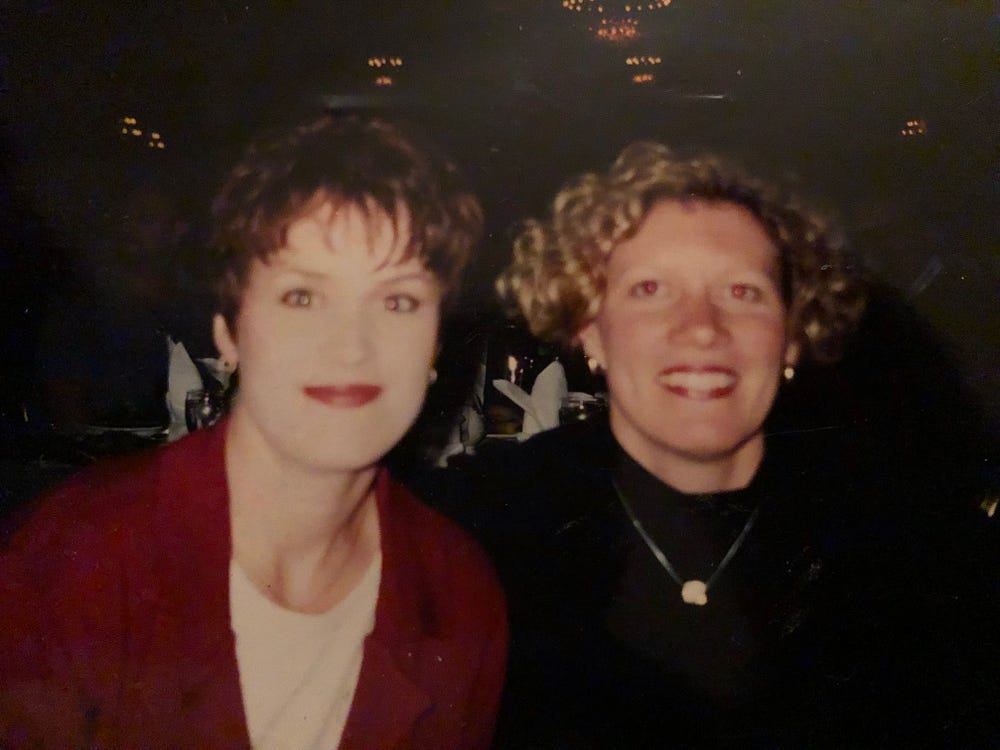
The “Why”
Getting to this race day had begun five months prior. My best friend Suzanne lost her sister to cancer in April of 2001. Suzanne had been one of Penny’s caregivers, and of course she was devastated. It had been a long road of illness and care. Penny was 43 when she died- the same age her father was when he had passed. Watching and supporting Suzanne as she lost another loved one was one of the most helpless experiences of my life.
In May, I decided to fundraise, train and run a marathon with Team in Training of the Leukemia & Lymphoma Society in memory of Penny. I had always wanted to run a marathon. I had run 5k, 10k, and half marathon distances but had never had the nerve to attempt 26.2 miles. Five months of training felt like a huge commitment, but I decided to take the leap. I chose the Chicago Marathon, and my training and fundraising began that June.
You Trying to Kill Yourself?
When non-running friends first heard that I was training for a marathon, they focused on the miles and physical demands. I will never forget how my father looked me square in the eyes and asked, “You trying to kill yourself?” My mom didn’t say much, but when chronic hip pain set in, she hauled me off to her chiropractor, convinced that he would put me right in both body and mind. Her plan backfired when he praised my efforts in front of her and told me to keep moving, no matter what.
Many friends told me I was crazy, but they whipped out their checkbooks and donated to the cause.
Yes. There’s physical pain involved. There were many Saturday mornings after my long runs (ranging from 10–20 miles) when I hobbled up the steps to my apartment door because rigor mortis had set in during the 30-minute car ride home.
But, one of the things nobody tells you when you begin a marathon training schedule is that it’s really about mind training.
Mind Matters
It takes a lot of mental stamina to keep running when your body is screaming for you to stop. Beyond the physical pain of endurance running, there’s also the boredom, exhaustion, and fears that running long distances can create. Along the way, I discovered other side effects.
My endurance training began with early Saturday morning long runs at a local metro park. Denise (my training partner) and I ran the eight mile circumference of the park as many times as it was necessary to get the assigned mileage done. The first time our mileage exceeded eight miles, I learned something about myself.
“I don’t want to cross over where we started,” I huffed and puffed.
“It’s no big deal, we’ll just run a half mile past our starting point and turn around to get back to it. That’ll tack on the extra mile that we need today,” Denise explained.
“No. You don’t get it. It makes me feel like a gerbil on a wheel. I can’t cross over our starting point.”
“You’re kidding me.”
“Um. No, I’m not.”
So we ran to mile eight and backtracked half a mile and ran it again to our starting point. Denise shook her head the entire time, but I was happy because I had avoided a huge mental hurdle.
During the week, I ran on my own. As training progressed, the mileage increased. My mornings began at 4:30 a.m., in the dark, and often in the cold. Sometimes I had to bribe myself with caramel macchiatos to get myself out of bed. Because I was running by myself in the dark, I learned to get used to sound of my breathing and pounding feet instead of the music I usually listened to with my headphones.
On the long Saturday runs, I mastered the art of disassociation. If you’ve ever stood on the sidelines of an endurance race, you may have noticed the infamous runner’s stare. You look into their eyes as they pass and get the distinct impression that “nobody’s home.”
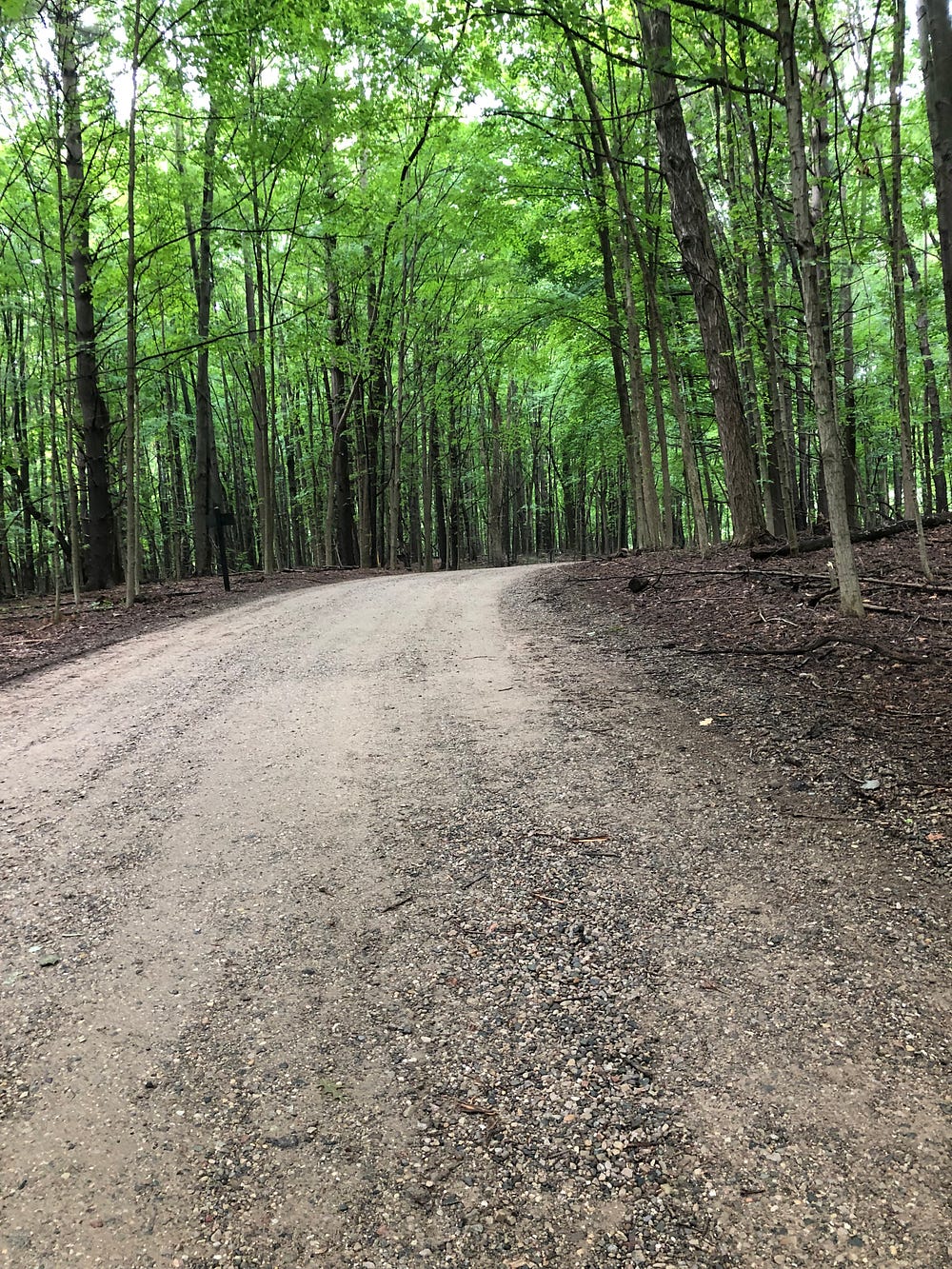
On one particular run, I ran slightly ahead of Denise. We were at mile 15 of a 20-miler. The metro park where we trained had woodsy, rolling hills. My mind was blank, and I was in the zone when I suddenly became aware of someone yelling.
“Tracy! Trac-yyyy!”
“Huh?”
“Tracyyyyyyy! Stop! You’re going to hit it!”
I came to an abrupt halt. “What are you talking about?” I demanded as I turned to face her.
“That!” Denise yelled as she pointed.
I turned back to see what she was talking about. Not more than three feet in front of me was a deer. A very bemused deer…with an almost human look on her face that seemed to say, “What the hell is wrong with this woman?”
As my training mileage increased, I began to look forward to each running session. They helped me decompress from bad work days. I have always had the mind of a squirrel that’s jacked up on speed. My runs slowed and sometimes silenced the constant chatter of my inner dialogue. However, in between my training runs, I was still plagued by fear.
“Will I be able to finish?”
“What if I injure myself?”
“What if I get all the way to Chicago, and I can’t do it? I’ll let down all the people who sponsored me…including the heroes going through treatment right now.”
Race Day
Race day was almost one full month after the World Trade Center attacks. Fear ran rampant throughout the entire country, and my own anxieties were at an all-time high. As I rode a shuttle bus with Denise and her family to pick up my race packet, I overheard her husband tell her sons, “Well boys, you’re about to wade into a sea of people who suffer with Obsessive Compulsive Disorder. Gird your loins.”
I snorted at his description, but privately thought that he probably wasn’t far off the mark. I had begun questioning my sanity during our four-hour drive to Chicago.
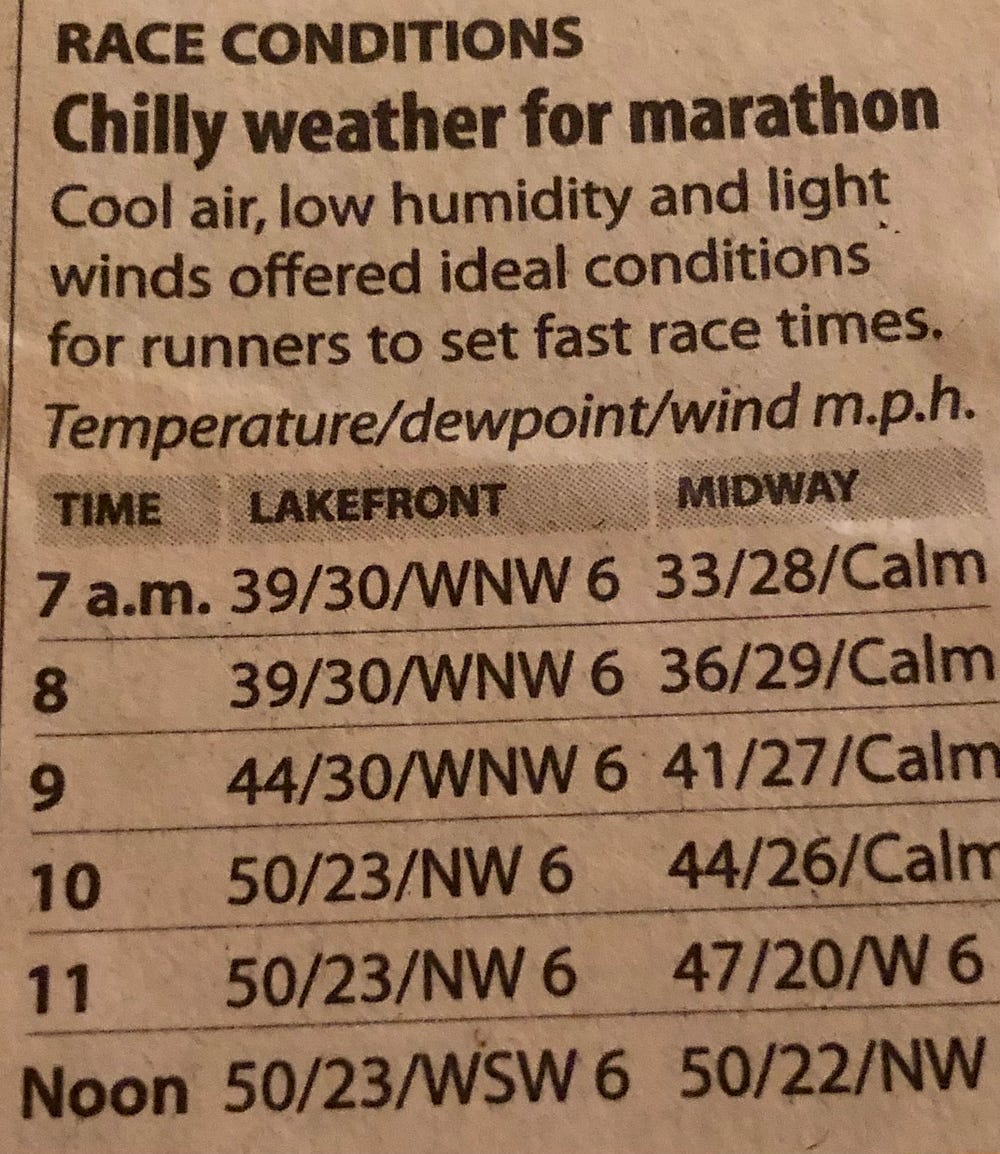
The Chicago Marathon 2001 race day was chilly but brilliantly sunny. Denise and I shuffled in place to stay warm. We’d both worn “throw away” layers that we could strip off once we became warm. Race volunteers would collect them after the start of the race and donate them to area shelters. After two hours of taking photos and waiting in the port-a-john lines, the starting pistol sounded, and we were off.
The first few miles were a blur. In addition to thousands of runners, the crowds lining the route were immense. Some shouted cheers and blared inspirational music. One group of drag queens held up “Go Wonder Women!” signs bedazzled with sequins and glitter. Pom-pommed cheerleaders shouted encouragement in their husky voices.
Around mile 8, the unthinkable happened. Denise’s knees protested. She limped to the aid station for a cup of water. I stopped with her, not sure what to do.
“Go,” she huffed, “I’ll catch up.”
“You sure?”
“Go.”
And just like that, I was running the Chicago Marathon by myself.
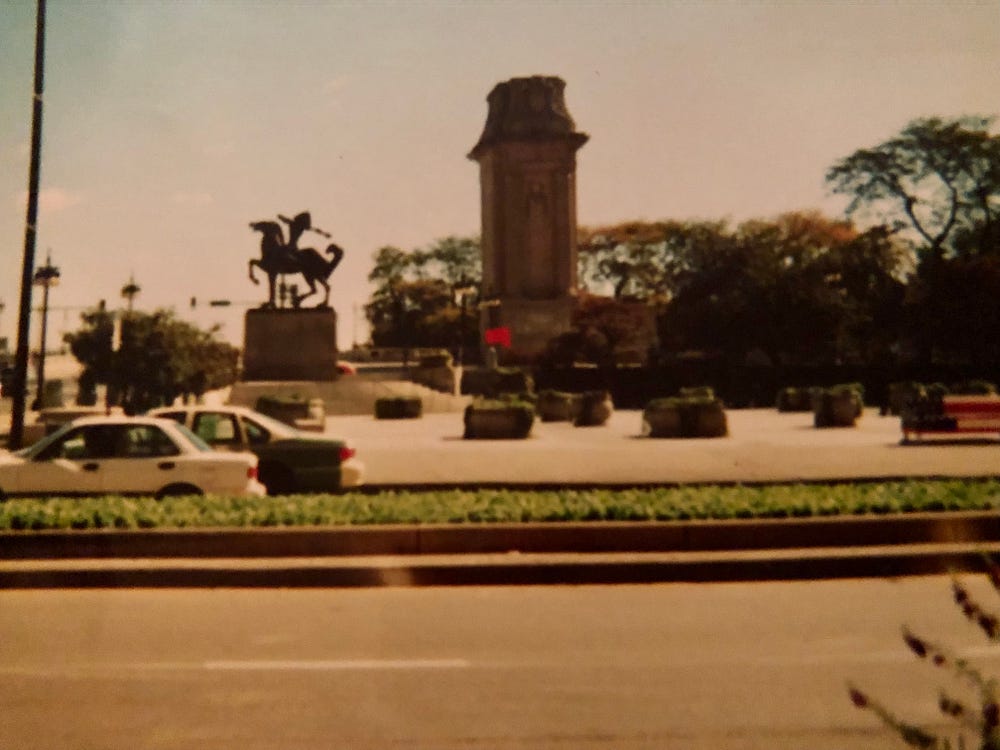
As the miles stacked up, my mind betrayed me in a dozen little ways. The fears that I had been able to silence during my training runs now taunted me:
Ha! You can’t do this by yourself.
Who do you think you are?
You’re fucking crazy.
Best to quit now.
When I reached mile 13, I began to tell myself that I could quit, but I would have to turn around to go back to the starting line. If I did that, I’d still be running 26 miles.
So you might as well keep going toward the finish line.
I had an emotional breakdown at mile 16 because I was sure I had already run it. I should’ve been at mile 17.
How am I seeing this mile marker again?
At mile 18, an aid worker offered me another cup of water. I drank it but felt like I was drowning. I could barely choke it down. I remembered Randy’s lecture about hyponatremia, which is when a runner drinks too much fluid. Sodium levels in the blood fall too low by being diluted by excess fluid or losing excess sodium from sweat without replacing it. Women are more prone to it because they sweat less. I grabbed two salt packets and downed them. Within 10 minutes, I felt better.
And then, the magic happened. I passed the mile 19 marker, and the realization that I was going to finish my first marathon washed over me. Randy found me and ran alongside me in his ridiculous afro clown wig.
“How are you feeling?”
“I’m good.”
“You look good. I don’t think I’ve ever seen anyone smile so much at mile 19.”
“It’s because I just realized that I’m going to do this. I’m going to finish.”
Tears streamed down my face, but I couldn’t stop smiling.
I’d like to say that I sprinted to the finish in a blaze of glory. I actually had this half hobble-half shuffle gait going on by the time I crossed the finish line, but it felt like I was on fire. I couldn’t stop laughing and crying as the race volunteers took the timing chip off my shoes for me, wrapped me in a foil blanket and hung the race medal around my neck.
My legs didn’t work well enough to get to the recovery area, so someone supported me. Denise did finish the race, demonstrating even more grit than I thought possible. Suzanne met me in the recovery area, her arms full of orange Gatorade, bananas and chocolate milk. I refused to walk the few blocks to the hotel, so she got us a cab.
Back up in my hotel room, I stood in the hot shower letting the massage jets pound on my back and legs. Everything anyone had ever said to me about insanity and my lack of running ability seemed to evaporate in the steam. I felt lighter. Stronger. Powerful.
Later, wrapped in the hotel’s cushy white bathrobe, I dialed my parents’ number.
“Mom?”
“How did it go, honey?”
“It was amazing.”
“Oh, you didn’t finish.”
“NO! I finished. It took me four hours and 20 minutes, but I finished.”
(She turned away from the phone to talk to my dad) “Dave-she finished!”
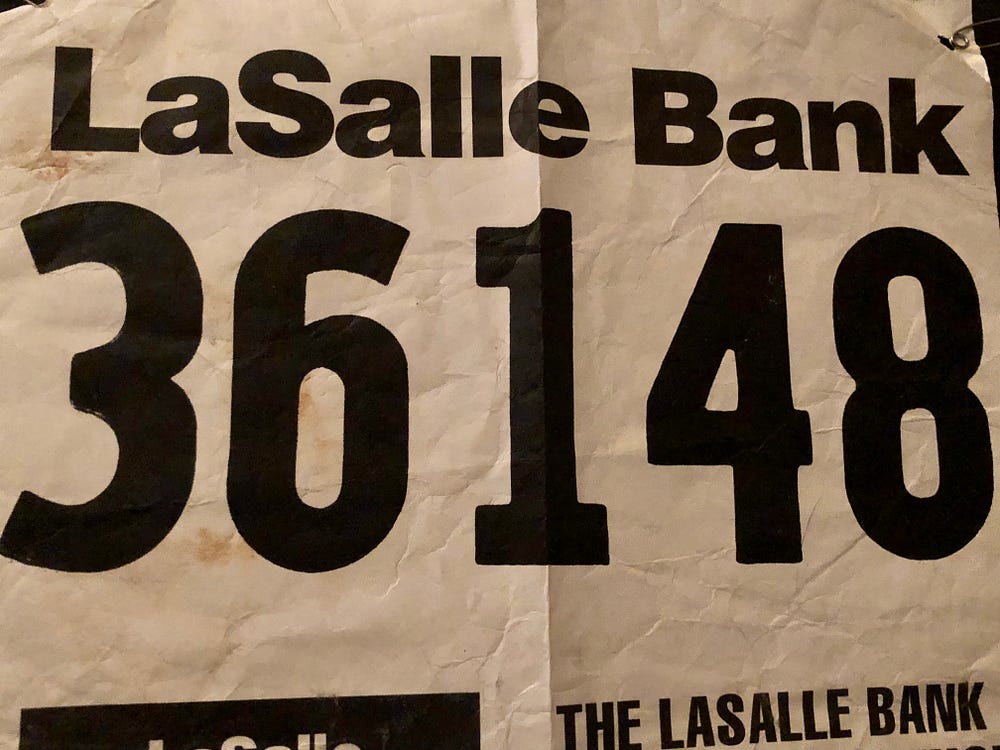
It has been years since I’ve been able to run. After 10 years, injuries and over-training put an end to my running days. I went on to run two more marathons and many more smaller distance races. But nothing compared to my first mile 19. It was one of my greatest teachers and has become a metaphor that I turn to when my struggles seem insurmountable.
I can and do honor the commitments I make to myself.
I can do just about anything, one step at a time.
Fear isn’t reality. My thoughts are not necessarily truths.
I am mentally strong.
I listen to myself. Others’ opinions and judgements are only as relevant as I choose for them to be.
No one will believe in me, if I don’t don’t believe in myself.
I only fail when I don’t try.
Mile 19. It was one of my best decisions. Ever.
If you enjoyed this post, head over HERE to read more of Tracy's memoirs, essays and poems. No subscription needed (you can read up to 4 for free each month).
- Get link
- X
- Other Apps
Popular Posts
Seeds of Change: Enlightenment & The Scorpions
- Get link
- X
- Other Apps

.JPG)
.jpg)
.jpg)
.jpg)
Comments
Post a Comment